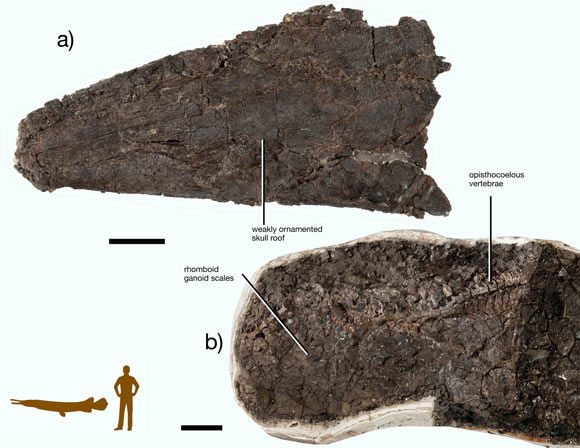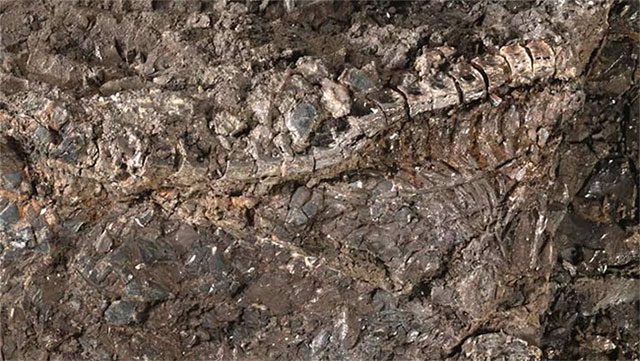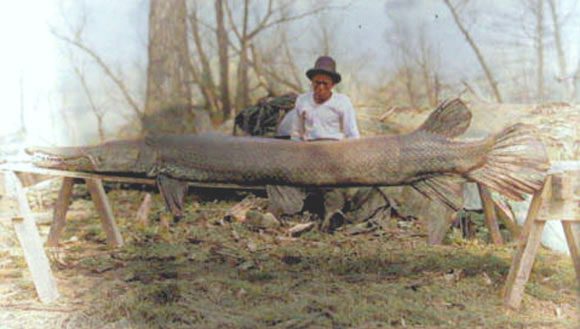Despite the giant monsters of Earth, including dinosaurs and their aquatic relatives like the Plesiosaurus and Mosasaurus, which were wiped out in the asteroid disaster, a peculiar creature survived for an additional 1,500 to 2,500 years.
The super-monster Atractosteus grandei does not belong to the dinosaur lineage but resembles a mix between Plesiosaurus, Mosasaurus, and crocodiles.
According to Sci-News, it is a Gar fish, also known as “ray-finned fish.” Gar fish are a primitive group within the family Lepisosteidae. There are 7 species of Gar in 2 genera: Atractosteus and Lepisosteus, which first appeared in the late Jurassic period, around 150 million years ago.


Specimen excavated alongside a size comparison image between it and a human – (Photo: Chase Doran Brownstein & Tyler R. Lyson)
Paleontologist Chase Doran Brownstein from Yale University and his colleague Tyler Lyson from the Denver Museum of Nature & Science analyzed the fossils of this ancient fish, discovered in the lower part of the Fort Union Formation in Bowman County, North Dakota.
The specimen is 66 million years old, dating closely to the mass extinction event that wiped out the dinosaurs due to the Chicxulub asteroid impact, but it is older by 1,500 to 2,500 years. This means this super-monster survived the catastrophe.
“The specimen was preserved in a light brown mudstone block, very fragile, covered by an 8 cm thick layer of lignite, a water deposition environment,” Dr. Brownstein explained.
The specimen includes a skull with articulated joints and an intact lower jaw, as well as a series of vertebrae, ribs, and scales.

A modern Atractosteus species, a descendant of the super-monster that survived the dinosaur mass extinction – (Photo: American Museum of Natural History)
The discovery of Atractosteus grandei indicates that healthy freshwater ecosystems thrived in North America for thousands of years after the Chicxulub asteroid impact.
“Large-bodied terrestrial vertebrates faced high extinction rates, while small-bodied vertebrates living in protected freshwater ecosystems were shielded from the worst impacts,” the authors concluded in their publication in the scientific journal Biology Letters.
This provides evidence that despite the mass extinction that killed 75% of Earth’s species, including all dinosaurs, freshwater ecosystems continued to recover robustly in many areas, as part of a new generation of life following the extinction event.
The creatures in the fossil specimen are now extinct, but their descendant species still exist today.


















































